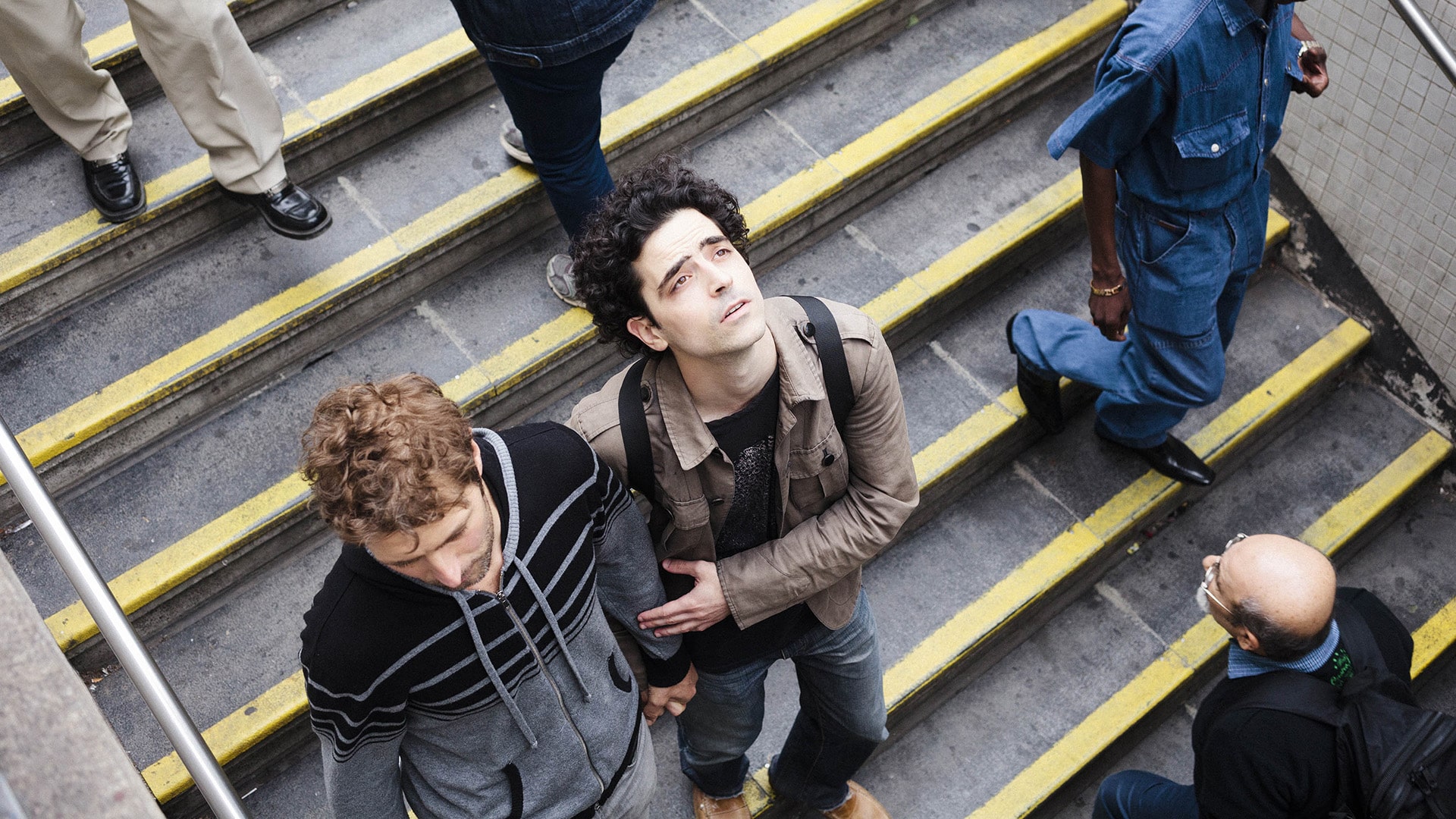As a result of directives from the authorities in each country, most exhibitions are suspended, postponed or cancelled. We decided to publish the articles about them anyway, especially when we could see them before they closed. For more information on our editorial line during this period, you can read our editorial here.

The inspiration for the exhibition came from the personal experience of Espen Eichhöfer, one of the featured photographers as well as a co-curator. In 2013, he contributed twelve images to a group show at I/O Berlin. The photographs, chosen among some 1,600 shots taken around the Bahnhof Zoo, a railway station, documented moments of stillness in the moving crowd. One photograph zoomed in on a young woman in a snakeskin dress crossing the street at a traffic light.
The woman in the snakeskin dress sued the photographer. By 2018 the case had made it all the way to the Federal Constitutional Court, which held that street photography, even representing raw reality, was protected by artistic freedom. However, it also asserted the plaintiff’s right of personality, which protects one’s dignity and right to control commercial use of one’s identity. In other words, the court upheld the right to artistic expression even at the expense of individual rights, while conceding that street photography operates in a gray area, tiptoeing a fine line between innocence and infringement of privacy.
In the wake of the lawsuit, Espen Eichhöfer excised the figure of the woman in the snakeskin dress from the image, leaving a mysterious blank outline. Through this intervention, he created a new work of art that makes us question the precise contours of an absence.
Coming and going, S-Bahn passengers, locals, tourists, shoppers… are part of an anonymous stream of people. The camera freezes the flow of this human current, and unbeknownst to them transports “the man in the crowd” into new contexts: exhibition spaces, online photo streams, book publications. Albeit unnamed, the passersby lose part of their anonymity: larger than life, immortalized in an oversize print, they no longer “blend in.”

An artist or a voyeur
Beat Struli’s surreptitious photographs in turn possess an almost voyeuristic quality: eschewing artful composition, they seem to record random snippets of reality as seen on the go. Unmindful of intrusions into the field of vision, like an unidentifiable shape obscuring nearly half the frame, and indiscriminately focusing on faces or backdrops, they end up capturing hidden dynamics, such as the man turning around to eye the slender figure of a young woman in a white micro-mini skirt and black leggings.
That the subjects are unaware of being photographed lends authenticity to street photography: we see people the way they really are, going about their daily lives, interacting with one another, coming home from work, or maybe loitering around because they’ve just lost their job. Courts agree that it would be impossible for the photographer to obtain the consent of everyone within the frame. And yet, isn’t shooting inherently at least somewhat predatory?

Unsuspecting subjects
The privileged subject of many street photographers is the working class, the migrants, the homeless, people who are unlikely to object to being photographed even if they are aware of the camera, and even less likely to take the matter to court. Most of those who unwittingly wandered into Eichhöfer’s and Streuli’s field of view fall into this category. Only a tiny minority are aware of their rights and have the material means to exercise them.
Another group that paradoxically attracts the photographer’s gaze are those who deal outside the law. Thus Merry Alpern’s Dirty Windows, recently showcased in Blind, explicitly captures what was intended to be hidden from view. Ensconced in a friend’s apartment, the photographer trained her lens on the bathroom window of an illegal nightclub, recording sexual transactions in lurid detail. Although the controversy surrounding the series had more to do with obscenity than invasion of privacy, the latter remains a sticky issue: there is no doubt the subjects would never agree to have their clandestine activities documented, and if they ever learned of the existence of the photographs would not object publicly and risk being exposed.
And yet it is art: even as it strays into a gray area, prying open well-guarded secrets or lurking in back alleys, photography reveals a facet of humanity that deserves a closer look, the time of the frozen frame.



By Ela Kotkowska
The Illegal Image: Photography between Image Prohibition and Self-Censorship
February 2 to April 5, 2020
f3—freiraum für fotografie, Waldemarstraße 17, 10179 Berlin


